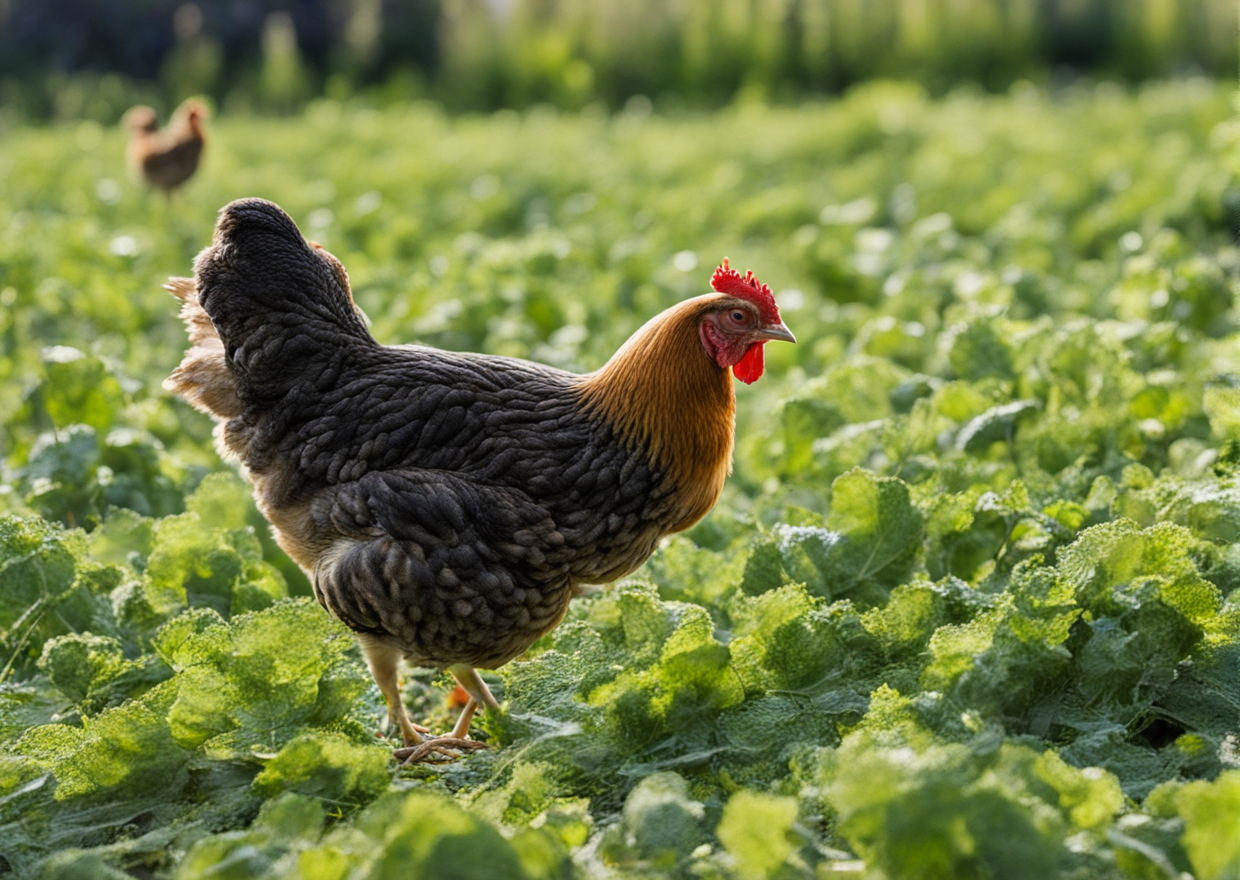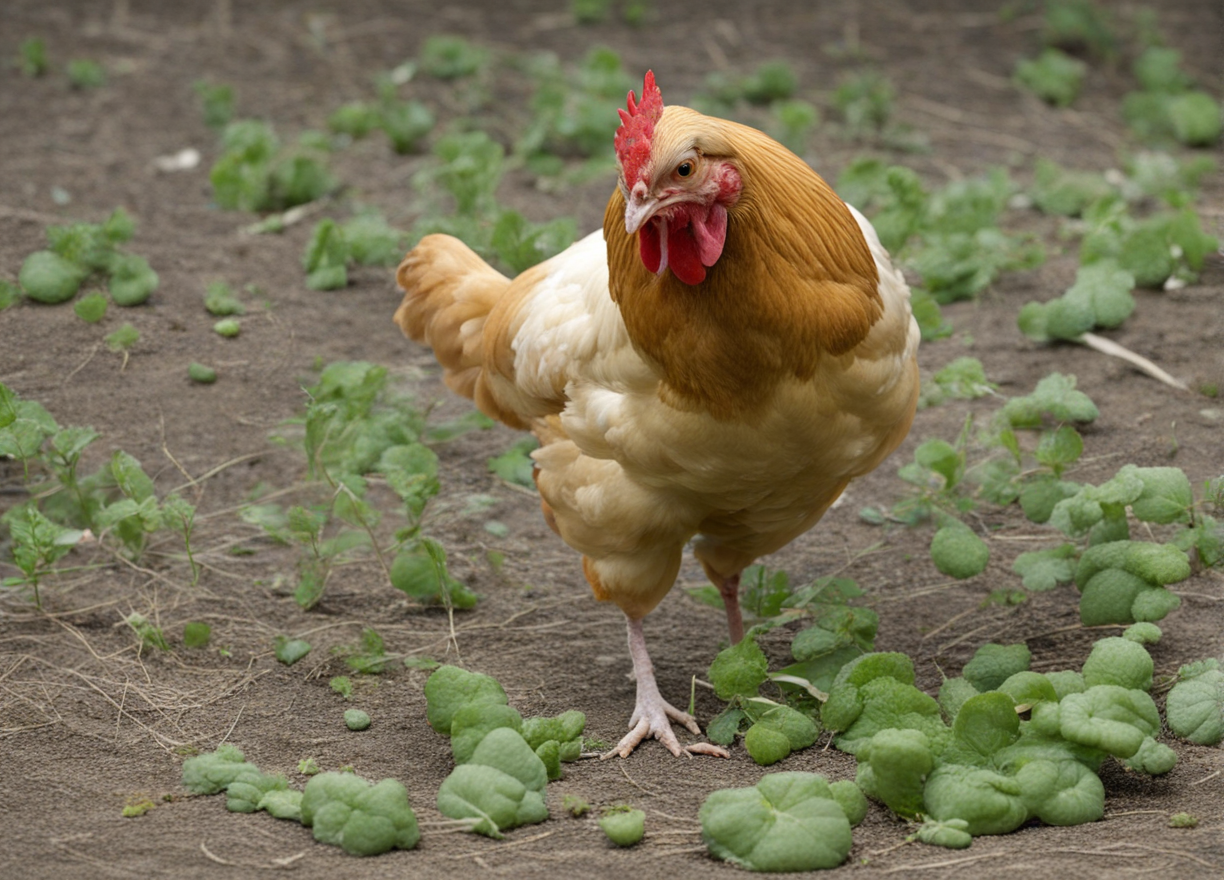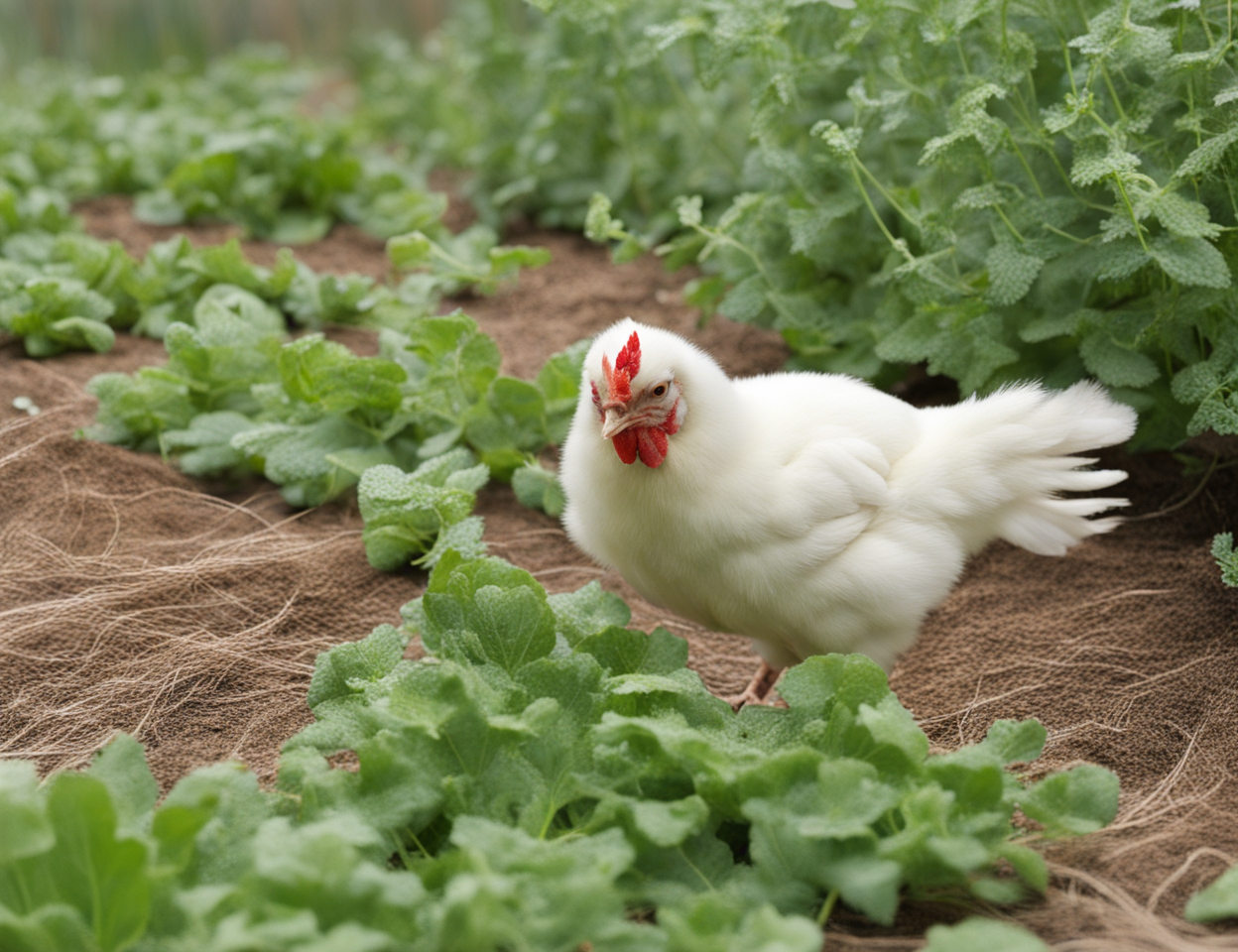I still remember the first time I offered my backyard flock some freshly picked goosefoot.
It was a warm April morning, right around Easter when my family always dyes eggs from our hens.
As I was tidying up the yard, plucking weeds, I spotted some odd triangular leaves clustered among the grass.
Looking closer, I recognized the distinctive shape of goosefoot, sprouting in little groups all over our lawn.
Having read that chickens can eat many weeds safely, I decided to offer some sprigs to my ladies.
Clutching a handful of the plants, I opened the coop and called my hens over.
Spotting the greens I held out, the chickens flocked around my feet instantly, craning their necks and breaking out in loud, impatient cackles.
As I lowered the goosefoot, 4 hens skirmished to snatch a bite while several others joined the commotion.
In less than 30 seconds, they stripped every leaf and stem as if it were gourmet salad.
Their obvious enjoyment made me curious.
So can chickens really eat goosefoot safely? Is it nutritious or even good for them?
I had to do some more googling to find out.
And it turns out, yes – goosefoot makes fantastic fodder that’s healthy for chickens in many ways!
Table of Contents
Goosefoot’s Nutrition Profile: An Abundant Forage Feast

Goosefoot, also called lambsquarters, contains a bonanza of nutrition chicken’s bodies crave:
First, it’s very high in protein – up to 7 grams per 100 grams – essential for egg production and growth.
It also packs a plethora of key vitamins chickens need to thrive:
Vitamin A for reproduction, bone development, immune function and eye/skin health.
B vitamins like riboflavin, niacin, and folate for converting feed into fuel and forming blood cells.
Vitamin C for collagen production, assimilation of iron, and immunity.
And Vitamin E to nourish skin, feathers, eggs, and overall vigor.
Some research even suggests goosefoot’s vitamin E may make egg yolks richer golden yellow.
Beyond vitamins, goosefoot contains a cornucopia of minerals:
Calcium for hardened shells and bone strength.
Phosphorus to utilize nutrients efficiently.
Iron for healthy blood and preventing anemia.
Potassium for fluid balance and nerve transmission.
Manganese for bone development and enzyme function.
Lastly, it boasts antioxidant compounds like flavonoids and phenolic acids to combat cell damage.
With all it brings to the table, no wonder my girls go cuckoo over goosefoot!
Goosefoot Hazards: Rare But Good to Know

While goosefoot makes a stellar poultry snack, there are a couple things to keep in mind:
Nitrate toxicity risk: Like some leafy greens, goosefoot can accumulate high nitrate levels when grown in contaminated soils.
While nitrates themselves aren’t toxic, bacteria in digestion can convert them into nitrites poisoning a chicken’s blood and tissues.
Luckily, nitrate toxicity is very rare in backyard homegrown goosefoot.
Commercial farms using fertilizers pose more risk. But it’s still uncommon.
Pesticides: Spraying goosefoot with chemicals could sickens chickens eating it.
So if offering plants from public spaces, ensure no pesticides were used that season.
For example, my county sprays certain parks and roadsides. But not trails and nature preserves.
Ask your local extension office for treated areas to avoid.
Of course, the safest bet is goosefoot grown right in your own organic garden!
How to Serve Goosefoot Treats

Giving chickens goosefoot is super easy and enjoyable.
Simply pluck whole plants straight from your lawn or garden.
Rinse off any dirt or debris.
Then lay a few fresh sprigs across their feeder or hang bundles for them to excitedly tear apart and munch.
You can offer goosefoot daily as part of a varied diet.
But switch it up with other weeds like chickweed, dandelion, clover, etc. as well.
Variety ensures balanced nutrition from different supplemental sources.
One of my favorite goosefoot serving tricks extends foraging time…
I hang whole uprooted plants from the coop ceiling by twine so my hens can spend hours jumping and pulling leaves.
This gives them stimulating “work” mimicking natural foraging behavior.
Watching my flock rip into goosefoot always floods me with warmth.
Their eager nibbling and contented cooing tells me the bounty I provide from my backyard makes their tummies AND lives richer!
Now that you know chickens thrive on this free garden gift, give it a go.
I promise your feathered friends will thank you as mine do!
When and How Much Goosefoot Can Chickens Eat?
Chickens of all ages can enjoy goosefoot – right from their first bites as chicks throughout their egg-laying prime.
The youngest chicks tend to ignore greens at first, focused on starter feed.
But they start trial pecking treats like goosefoot as early as 3-4 weeks old.
By 8 weeks old, most mini-peepers actively graze on greens offered.
Leave small bundles of goosefoot in their brooder for curious nibbling.
Pull off tiny leaf pieces at first to encourage tasting.
Then increase portion sizes as their appetite for foliage expands.
The optimal amount depends on how much other forage and supplements they get.
Aim for goosefoot to make up 5-10% of overall feed intake.
For example, a daily salad bar serving 1-2 ounces per bird aligns with commercial feed amounts.
Track if leftovers accumulate to gauge whether portions satisfy their hunger.
Give more on days they devour what you offer.
And reduce portions if they lose interest before finishing.
Bottom line – let your flock’s enthusiasm guide ideal goosefoot amounts!
Growing Goosefoot for Chickens in the Garden
Cultivating goosefoot is an easy way to put your green thumb to work for your flock.
Many gardeners actually consider it a nuisance weed that invades beds prolifically.
But letting some patches thrive provides free, nutritious chicken feed!
Goosefoot flourishes best in nitrogen-rich soil with full sun.
Its rapid growth chokes out other plants, self-sowing abundantly.
Each stem produces tens of thousands of seeds!
You can nurture dedicated goosefoot plots right alongside vegetable rows.
Or simply allow it to colonize unused spaces.
Scatter seeds in late spring after the last frost.
They’ll quickly sprout and mature into leafy greens within just 6-8 weeks.
Pluck outer leaves anytime once plants exceed 3 inches tall.
This stimulates further branching for continuous self-sustained harvesting.
Let some goosefoot go to flower and seed before winter.
Fallen seeds ensure next year’s volunteers emerge on cue each spring!
Drying and Preserving Goosefoot for Winter Months
Stockpile goosefoot for winter when fresh greenery gets scarce.
Harvest leaves, stems and shoots during summer and fall abundance.
Select young, tender growth for best nutrition and taste.
Discard any insect nibbled or discolored portions.
Rinse debris before gently patting moisture dry.
Air drying works well for preserving small batches.
Lay leaves loosely in a single layer on mesh racks or screens.
Set in a warm, dry, shaded spot out of direct sun until crisp.
For larger harvests, use a food dehydrator on low temp.
Rotate trays and check often to prevent over drying.
Crumble fully dried leaves by hand or pulse in a blender.
To extend shelf life, store in airtight containers.
Add dried goosefoot to feed rations or sprinkle as-is into their run.
Come winter, your flock will praise your foresight!
Medicinal Benefits of Goosefoot for Chickens
Beyond essential vitamins and minerals, goosefoot boasts medicinal merits.
It possesses antioxidant, anti-inflammatory, and antimicrobial effects to battle health woes.
Certain compounds show promise aiding multiple conditions:
Beta carotene and vitamin E promote immunity and fertility.
Flavonoids, phenols and terpenoids exhibit antiviral, antifungal and anti-parasitic properties helpful for gut health.
Saponins may boost antibody response to diseases like Coccidiosis in chicks.
While most research focuses on human use, some evidence suggests similar benefits in livestock.
Regularly feeding my flock fresh goosefoot may just help prevent issues:
Better resistance to contagions like Avian Influenza or Infectious Bronchitis.
Reduced internal worms or external mites.
And stronger ability to fight off common ailments like record-keeping issues or egg bound complications.
For these reasons, I view goosefoot as free functional food from my yard!
Watching for Adverse Effects of Goosefoot
While goosefoot poses minimal risks, monitor birds closely when offering a new treat.
Ensure they tolerate it well before serving freely.
Signs of goosefoot disagreeing include:
Noticeable drop in energy, appetite or egg production.
Increased thirst or abnormal manure.
Visibly poor feathering or dull comb/wattles.
Discontinue goosefoot immediately if any concerns arise.
Then slowly reintroduce small amounts a week later once symptoms resolve.
Resume free choice grazing only if no further issues surface.
Troubles are highly unlikely with backyard goosefoot.
But it never hurts checking how unique flock members respond!
Adverse reactions occur rarely even in sensitive birds.
So let them enjoy this natural free-range chicken candy!
Top Goosefoot Serving Ideas for Picky Eaters
Some finicky flocks snub unfamiliar offerings, even healthy ones.
Luckily several tips can help mask goosefoot’s novelty…
Blanch leaves 30 seconds in hot water to soften texture.
Mix chopped greens into favored grain or pellet ratios.
Serve stuffed inside hanging cabbage heads for curious pecking.
Skewer leaf bundles on branches at peck-height.
Hang upside down bunches for batting piñata style amusement.
Coat in irresistible scratch mix or nutritious yogurt dips.
Place heaps inside snacking baskets to slow forage speed.
Increase appeal by offering to most curious hens first.
Their nibbling and pleased chattering entices timid eaters.
Persistence pays off – don’t get discouraged!
One bite is all it takes to win over even the wariest bird!
